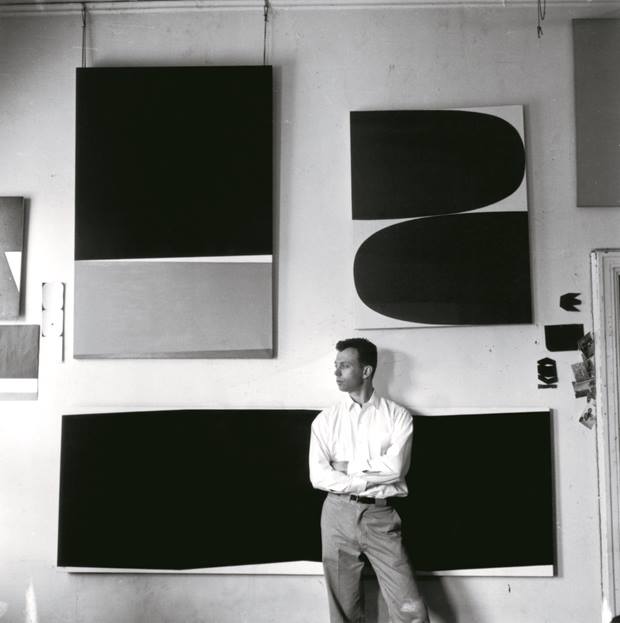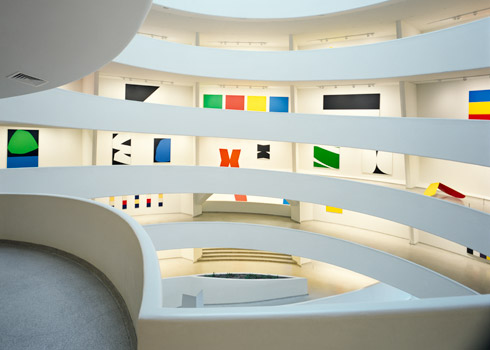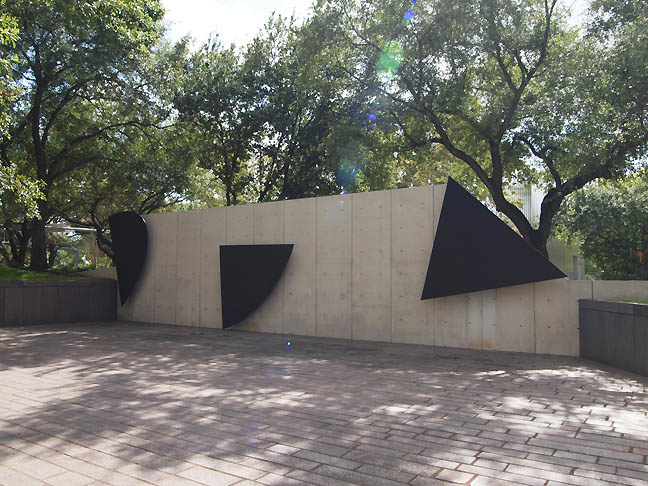
|
||
|
Portland art blog + news + exhibition reviews + galleries + contemporary northwest art
|
||
Ellsworth Kelly the Universal Naturalist  Ellsworth Kelly 1923-2015 "The things I'm interested in have always been there." -Ellsworth Kelly (1967) from Ellsworth Kelly: A Retrospective, ex cat. Solomon R. Guggenheim Museum p.17 We have lost a great one in Ellsworth Kelly as the New York Times, NPR and Guardian report. For so long I have considered him the greatest living painter... and frankly, I don't feel like picking a replacement. For me Ellsworth Kelly is simply the last greatest living painter? Like many over achievers he had a difficult mother, loved to climb trees as a youth (emulating Audubon in observing birds) and was among a group of artists (along with Agnes Martin, James Rosenquist, Robert Indiana & Jasper Johns) that set up their lofts in the cliffs of Lower Manhattan in the 50's. I don't think of him as s figurative or abstract artist so much as a universal naturalist driven by close observation of his environment. Obituaries and essays keep coming in, even a day later. I like these by the Washington Post, LA Times and these by friends like Jerry Saltz & Peter Plagens.  Red Yellow Blue II, 1965 (Collection of the Milwaukee Art Museum, photo Jeff Jahn) As one of my favorite artists what I appreciated most in Kelly's work was his way of sharing the otherwise impossible world of pure, concentrated observation. As subjectivity demands, conveying what one individual apprehends necessitates a kind of distillation and transposition into abstraction. Usually something is lost in that process, but not with Kelly. It ends up being visually and spatially richer and more pervasive... closer to an alphabet for the basic architecture of reality than painting. In Kelly's work the slightest little things feel like the curve of the Earth. One could tell he loved it here. When it comes to form only small but exacting details can be translated and shared... perhaps the more detail the more fiction is introduced? What was amazing is how Kelly found a way to put those fleeting observations into the bottle of Art in a way that preserves the freshness of the artist's first glance. And what an eye he had... an early hero of his was John James Audubon and that naturalist's style of direct observation tethered his abstractions to the real world in a way that Formalism and most current neo formalism are not.  Guggenheim installation (1996) Kelly made this feat look effortless and his exhibition at Frank Lloyd Wright's Guggenheim Museum is on my list as one of the greatest solo exhibitions of all time and the best thing ever done in that exceedingly idiomatic building. Where other painters felt brutalized by Wright's architecture... no curve can every diminish a Kelly. Kelly's work was a return to European influence in painting rather than the civil wars inherent in most "American" painting but it also had an inherent zen quality. I like to think that Kelley's work wasn't the traditional American declaration of war on painting but a declaration of persistence... even if it were the shadows of a railing on stairs or a the specific curve of a leaf. Ellsworth Kelly took those fleeting states of matter and through observation and his hand gave them graceful persistence, not as memory but as a state of being.  Installation view of Ellsworth Kelly/Prints at the Portland Art Museum 2012 (photo Jeff Jahn) In many ways his simple forms and colors were a riposte to the prevailing Avant-Garde's preferences for intellectual slander and artistic struggle (exemplified by Greenberg and Rosenberg's rhetoric) towards something very more mature... appreciation rather than planned/plotted obsolescence. In fact, the lack of a major Kelly in the Portland Art Museum's collection is a major hole because it counters and compliments Greenberg at the same time. (Personal aside, I remember the great conversation I had with Ellsworth's partner and Foundation Director, Jack Shear at PAM. He bought me a copy of Ellsworth Kelly Black & White at the museum bookstore... this must all be terribly difficult, I can hardly look at the book, but I can't stop thinking about it).  Houston Triptych (1986), photo Jeff Jahn Kelly's work came at a time when the world was war weary and with atomic weapons perhaps wanted to reach for something more civil and a return to continuity in culture by draining the drama of metaphor away?  Blue Curve (1996) at Mnunchin Galllery, photo Tom Powell Blue Curve (1996) at Mnunchin Galllery, photo Tom Powell
The act of looking for Kelly... in a very personal way was directly related to Matisse, someone few artists have been able to build upon. But Kelly did and similarly his work remained vital right to the end and unlike Matisse the work always feels like it is outdoors, even in a gallery. Perhaps that is the greatest of his Kelly's gifts as a an artist... the way things in his eyes/hands never seemed to be diminished in vitality, observation and specifics. Some artists make work for walls, somehow Kelly made work that reminded us how man-made structures are part of a larger and arguably free-er world. When I (and hopefully you) look at a Kelly my sense is there is no past or future... just an elevated sense of the exquisite present. Posted by Jeff Jahn on December 27, 2015 at 18:20 | Comments (0) Comments Post a comment Thanks for signing in, . Now you can comment. (sign out)
(If you haven't left a comment here before, you may need to be approved by
the site owner before your comment will appear. Until then, it won't appear
on the entry. Thanks for waiting.)
|
| s p o n s o r s |
 |
 |
 |
 |
 |
 |
 |
 |
 |
 |
 |
 |
 |
 |
 |
 |

|
Site Design: Jennifer Armbrust | • | Site Development: Philippe Blanc & Katherine Bovee | |

